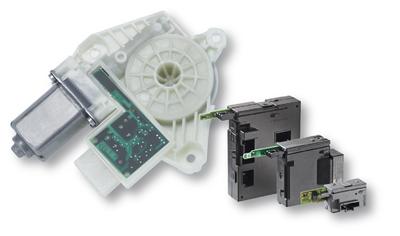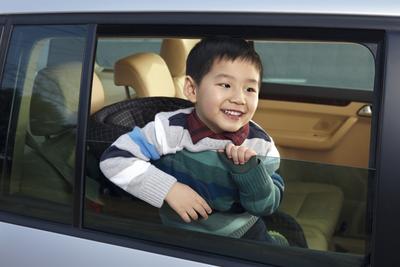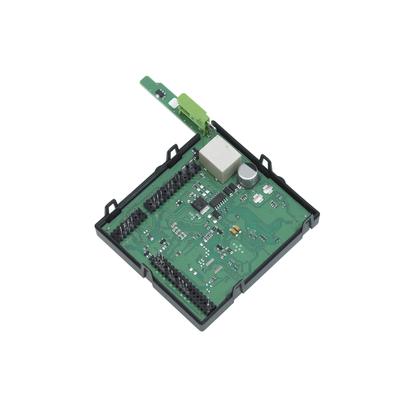SHANGHAI, July 8, 2014 /PRNewswire/ --
Gasgoo.com, a top-ranking Chinese automotive media, presented the results of a report about children's safety in cars to industrial and business media representatives during a press conference at the Asia headquarters of international automotive supplier Brose in Shanghai on July 8. The report was published to raise awareness about child safety in cars throughout China.



The publication is based on a survey conducted by Gasgoo on June 9 - 15 regarding children's safety in cars. It was composed of two questionnaires targeting end users and automotive professionals. Approximately 8,100 parent drivers participated and shared their opinions on the current situation of children's safety in cars in China.
"According to statistics of traffic safety institutions, over 18,500 children die in traffic accidents every year on average. This is twice as high as in Europe and America," said Wenkai Chen, Head of the Gasgoo automotive research institute and CEO of Gasgoo.com, during the media gathering. "Our survey showed that over 70 percent of parents choose their car as a means of transportation when they go out with their kids. This shows how important it is to take action and raise awareness for car safety."
One of the main reasons for children's accidents in cars is that parents allow their children to move about freely in cars. More than 45 percent of the participants believe parents' safety awareness is the key to help minimize the risks of injury for children. The report also revealed that most parents are either unaware of or do not understand the relevant safety technology and national regulations. "Therefore we feel that it is increasingly important for car manufacturers and suppliers to implement intelligent systems that eliminate the risks of injury in the first place," said Chen. "Brose's anti-pinch features for power window regulators with automatic up feature is a good example of what can be done to increase safety in cars," he concluded.
Anti-pinch technology to minimize injury risk
Currently 80 percent of all vehicles in China are equipped with power window regulators and the number is rising. This is certainly a gain in comfort that can be further increased with electronic features such as the "one-touch" function for opening or closing the window with a simple touch of the button or closing the window via remote control from outside the vehicle.
But what happens if there is an obstacle between the window and frame, for example, a child's hand - or even worse, a child's neck? For Brose, this was already a crucial issue as long as 30 years ago. As a result, the automotive supplier and world market leader in window regulators developed a system for power window regulators that minimizes the risk of injury: the anti-pinch feature. This electronic safety feature ensures that the window immediately stops and reverses if it detects an obstacle when closing.
Since 2012: Required by the National Standard in China
Brose's electronic safety feature ensures that the window immediately stops and reverses if it detects an obstacle when closing. Brose currently supplies almost all international OEMs with 30 million electronic components annually; 7.5 million of these are fitted in cars in China.
In addition to having become a technical standard for the majority of car manufacturers, the anti-pinch feature is now also part of legal regulations such as the EU Directive 74/60/EEC. This directive clearly defines the permissible closing force of the window until the anti-pinch function is activated. A comparable regulation came into force in China at the beginning of 2012 (National Standard No.GB 11552-2009) requiring anti-pinch technology with a maximum closing force of 100 newtons for window regulators with automatic up function or remote control window closing. This means that the window must stop and reverse if more than 100 newtons of closing force is exerted on objects in an area where there is a risk of injury from becoming trapped (range of window openings from 4 to 200 mm). During the automatic up operation without anti-pinch feature, forces of up to 400 newtons are exerted, which corresponds to about 40 kilograms.
Although this potential source of injury is easily alleviated nowadays, numerous vehicles in China are still equipped with window regulators that exert high closing forces or do not reverse automatically if an obstacle is detected. According to the new standard, all vehicles launched from 2012 on that are equipped with an automatic up feature must have an anti-pinch function. This standard is therefore identical to the European legislation.
Implemented millions of times: Brose electronics for more safety
Proven millions of times over, the solution of the mechatronics specialist consists of a system based on modular hardware using hall sensors to monitor the speed of the window regulator motor. The electronics are directly connected to the motor housing and identify any change via target/actual comparison. If the motor slows down due to an obstacle, this is registered by a sensor and the information is transferred to the micro controller, which stops and reverses the motor.
The Brose technology is fail-safe and works reliably even at high or low outside temperatures, with very dirty windows or in the event of substantial power fluctuations in the vehicle electrical system.
Brose anti-pinch function for more than 30 years
In 1986, the GM subsidiary Opel celebrated the world premiere of the Opel Omega equipped with the anti-pinch function. In 2006, the mechatronics specialist was the first supplier to implement power window regulators in the rear of coupes and convertibles that met all the requirements of the EU standard. Series production of this version of the anti-pinch function started with the Opel Astra TwinTop. Until then, sports cars did not have an automatic up feature implemented in rear windows. Through the acquisition of the electric motor business from Continental in 2009, the supplier managed to further expand its system expertise, which resulted in mechanics, electrics and electronics from a single source - all perfectly attuned to each other.
Currently, engineers of the family-owned German company have brought the sixth generation of this safety feature to the market, with the electronics directly integrated in the gear housing. This "press-in" technology provides additional cost and space savings. The mechatronics specialist also offers plug-in electronics or complete door control units as optional extras. The latter allows the integration of additional comfort functions such as the control of the side mirror, mirror indicator or side door latch. Whether fully integrated into the drive or plugged-in via a standardized interface, the electronics are scalable from the sensor function to the door control unit.
The anti-pinch feature is a prime example of a product innovation that is continuously being adapted to meet the latest requirements of automobile technology. Some of the engineers in the expertise center for window regulator electronics in Hallstadt (Germany) are already working on the seventh generation of the anti-pinch function featuring a semi-conductor instead of a relay. In addition to reduced package space, acoustics benefits and a more precise control of the window regulator speed are achieved.
In cooperation with universities, potential trapping scenarios are constantly being analyzed in studies, which allow continuous refinement of the system. Brose uses this knowledge and its decades of know-how in this area not only for side windows: special teams are also working on convertibles, station wagons, vans and SUVs, where new fields of application are opening up that are closely related to the traditional anti-pinch function, such as power liftgates. Their operating principle is based on optical or capacitive sensors. The anti-pinch function is also available for car seats, which is another area of the automotive supplier's expertise. The software integrated in power seats with integrated memory function detects obstacles and causes the seat to briefly reverse when adjusting the length or recliner position.
For more detailed information about Brose China, please see: http://www.brose.com/cn
Photo - http://photos.prnasia.com/prnh/20140708/0861404796-a
Photo - http://photos.prnasia.com/prnh/20140708/0861404796-b
Photo - http://photos.prnasia.com/prnh/20140708/0861404796-c